What is Type 4C Hair?
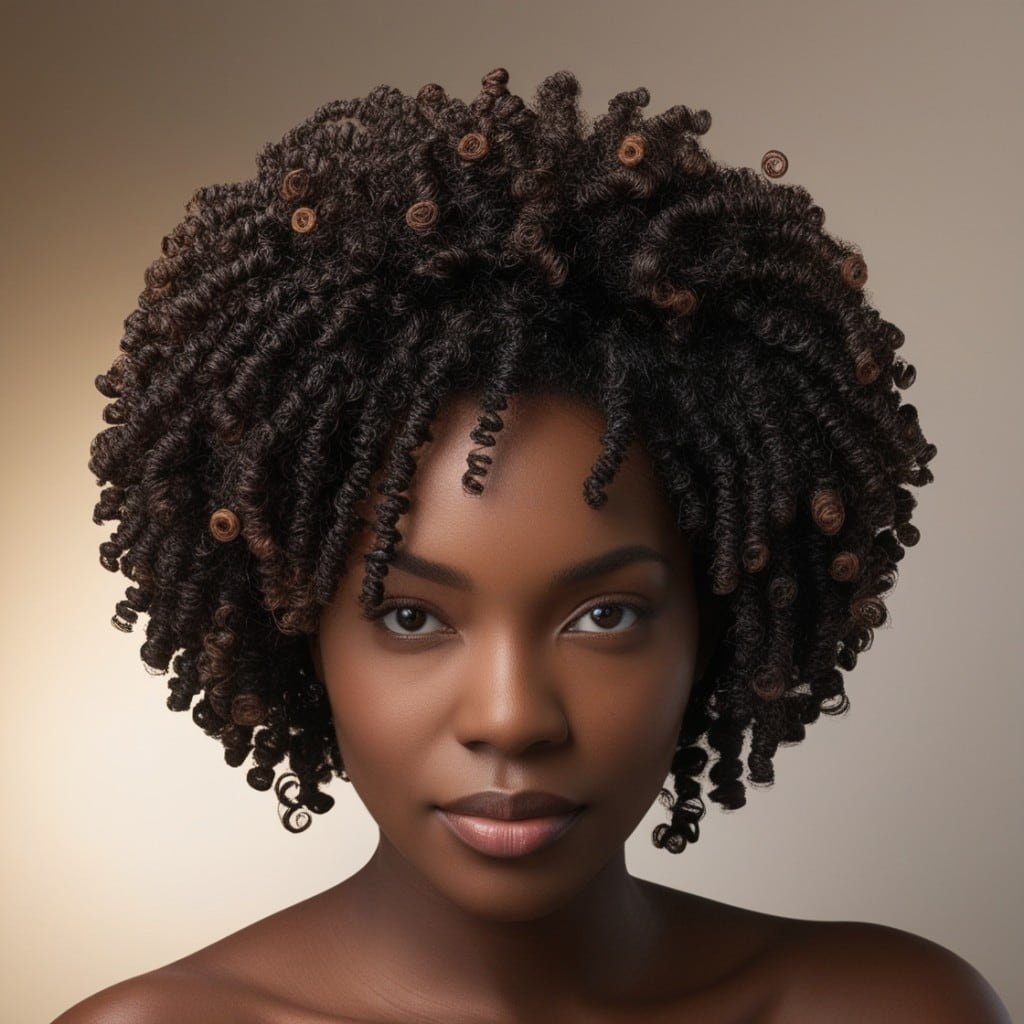
Type 4C hair is one of the most unique and beautiful hair textures, known for its tight curls and coils. It’s a category under the Type 4 hair classification, which includes tightly curled hair. Specifically, 4C curls have a distinct pattern that is often densely packed, resulting in less defined curls but more volume and texture. Many people with natural black hair find themselves with this curl pattern, which has its own set of characteristics and needs.
The Importance of Understanding Your Hair Type
Understanding your hair type is crucial in knowing how to care for it properly. For those with Type 4C curls, recognizing the unique needs of your hair can lead to healthier, stronger, and more manageable tresses. It can also empower you to embrace your natural texture, appreciating its beauty and versatility.
Understanding Type 4C Hair
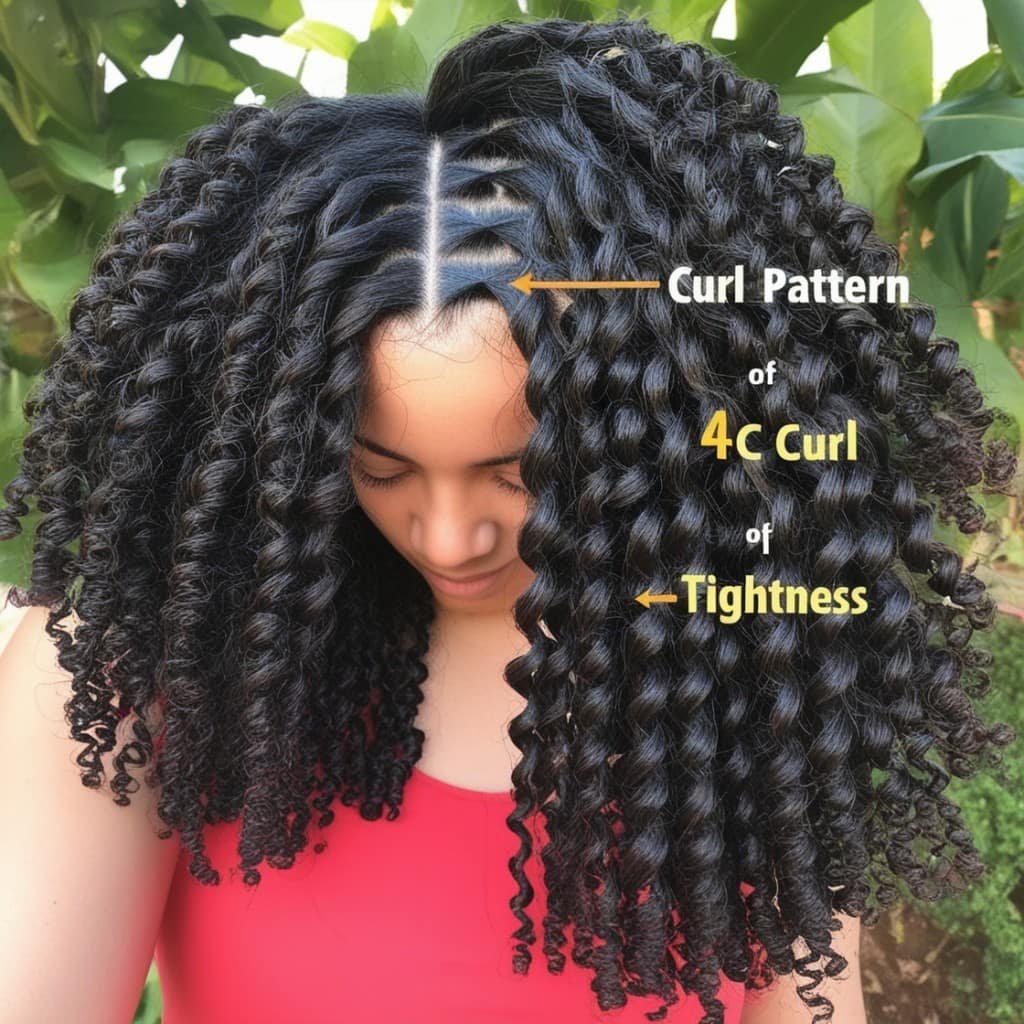
Defining Type 4C Hair
4C curls is characterized by its tight curls and zigzag pattern. Unlike other Type 4 hair types, this curl pattern often doesn’t have a defined curl unless manipulated through styling techniques. This texture is also highly prone to shrinkage, which means it can appear much shorter than it actually is.
Characteristics of Type 4C Hair
4C curls are naturally dry due to the tightness of the coils, which makes it harder for the scalp’s natural oils to travel down the hair shaft. This hair type is also prone to tangling, breakage, and requires regular moisture to maintain its health. The strands can be fine, medium, or coarse in texture, but they all share the common trait of requiring special care to stay hydrated and strong.
Common Misconceptions about 4C Hair
One of the biggest misconceptions about Type 4C hair is that it’s difficult to manage. While it does require specific care, this curl type can be incredibly versatile and easy to style when properly maintained. Another myth is that it doesn’t grow as fast as other hair types. In reality, 4C textures grow at the same rate as any other hair type, but its shrinkage can make it appear shorter.
The Natural Beauty of 4C Curls

Embracing Natural Black Hair
Embracing your natural coils means recognizing their beauty and understanding that they don’t need to be altered to be beautiful. The natural black hair of those with this curl pattern has a rich history and cultural significance that should be celebrated. Learning to love your Type 4C hair starts with understanding its unique needs and treating it with the care it deserves.
The Cultural Significance of 4C Hair
4C hair is deeply rooted in African culture and history. It’s a symbol of resilience, identity, and beauty. Throughout history, natural black hair has been a way for individuals to express themselves and their heritage. Today, embracing 4C hair is not just about aesthetics but also about reclaiming and honoring that cultural significance.
How to Care for Type 4C Hair
Importance of Moisture for 4C Hair
Moisture is the lifeblood of this curl type. Because of its curl pattern, 4C textures is more susceptible to dryness, making regular moisturizing a crucial part of its care. Hydrating your hair not only keeps it soft and manageable but also protects it from breakage and damage.
Best Products for Type 4C Hair Care
When it comes to 4C textures, the best products are those that provide intense moisture and nourishment. Look for leave-in conditioners, moisturizing creams, and natural oils like shea butter and coconut oil. Avoid products with harsh chemicals, sulfates, and alcohols, as these can strip the hair of its natural oils and cause dryness.
Avoiding Common Mistakes in 4C Hair Care
One common mistake in 4C textures care is over-washing. Unlike other hair types, 4C textures don’t need to be washed frequently as it can lead to dryness. Another mistake is neglecting to detangle properly, which can lead to breakage. Always detangle your hair when it’s damp and use a wide-tooth comb or your fingers to minimize damage.
Protective Hairstyles for Type 4C Hair
Braids and Twists
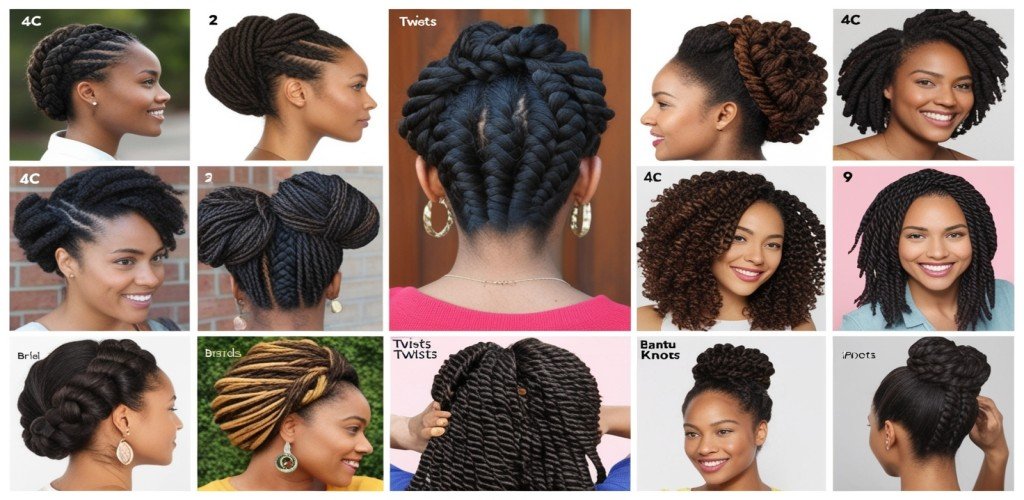
Braids and twists are excellent protective styles for 4C textures as they help to lock in moisture and reduce manipulation, which can lead to breakage. These styles can be worn for weeks at a time, giving your hair a break from daily styling.
Bantu Knots and Their Benefits
Bantu knots are another protective style that not only protects your hair but also gives it a beautiful curl pattern once they’re taken down. This style keeps the ends of your hair tucked away, minimizing the risk of split ends and breakage.
The Versatility of Updos
Updos are a versatile option for this curl type, whether it’s a sleek bun, a braided crown, or a simple puff. These styles keep your hair off your shoulders, reducing friction and breakage while still allowing you to showcase your natural hair.
Styling Tips for 4C Textures
Using Heat Safely on Type 4C Textures
Heat styling can be used on 4C textures, but it’s important to do so safely to avoid damage. Always use a heat protectant spray and opt for lower heat settings. Regular use of heat can lead to dryness and breakage, so it’s best to limit it and explore heatless styling methods.
Stretching Techniques for 4C Curls
Stretching your 4C curls helps to reduce shrinkage and make it easier to style. Techniques like banding, threading, and twist-outs can help elongate your curls without the use of heat, allowing you to enjoy more of your hair’s true length.
Enhancing Curl Definition
To enhance curl definition, use styling creams or gels specifically designed for 4C textures. Applying these products while your hair is wet and then using a twist-out or braid-out method can help define your curls. Diffusing your hair on a low heat setting can also help to set the curls in place.
Challenges of 4C Type and How to Overcome Them
Managing Shrinkage
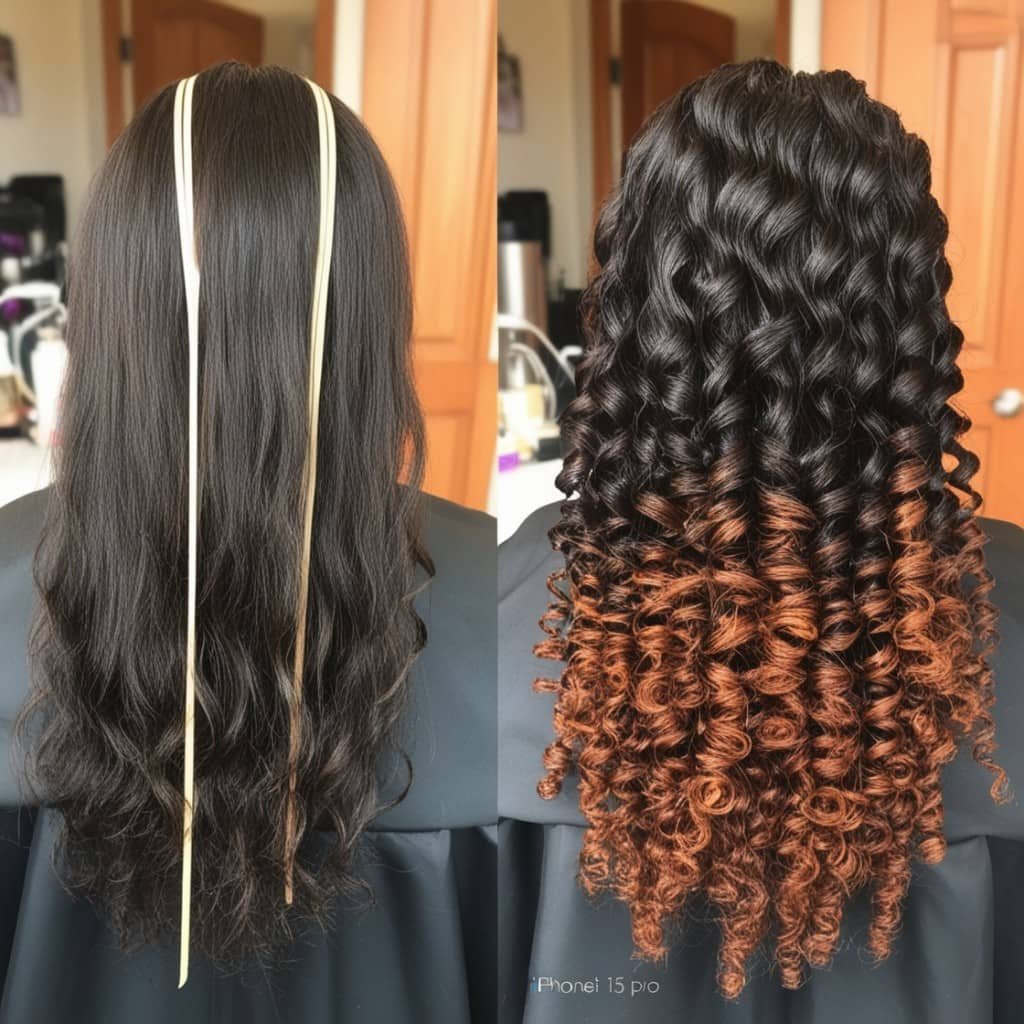
Shrinkage is a natural part of 4C textures, but it can be frustrating when you want to show off your length. The key to managing shrinkage is in the styling. Stretching methods and protective styles can help reduce the appearance of shrinkage, allowing you to enjoy more of your hair’s length.
Dealing with Dryness
Dryness is a common challenge for 4C curls due to its curl pattern. To combat dryness, ensure that you’re moisturizing your hair regularly and sealing in that moisture with an oil or butter. Deep conditioning treatments should also be a regular part of your hair care routine.
Combating Breakage and Split Ends
Breakage and split ends can be minimized by reducing manipulation and keeping your hair well-moisturized. Regular trims, protective styling, and gentle handling during detangling are essential to maintaining the health of your Type 4C textures.
Natural Hair Journey with 4C Hair
Starting Your Natural Hair Journey
Embarking on a natural hair journey with 4C textures can be incredibly rewarding. Start by educating yourself on the best practices for your hair type, and be patient as you learn what works best for your hair.
Transitioning to Natural 4C Type
If you’re transitioning from chemically treated hair to natural 4C curls, it’s important to be gentle with your hair during this period. Protective styles can help during the transition phase, as can regular trims to gradually remove the treated ends.
Maintaining Length and Health
Maintaining the length and health of your 4C curls involves a balance of moisture, protection, and gentle care. Consistency in your hair care routine is key to seeing long-term results.
DIY Hair Care for 4C Textures
Homemade Deep Conditioners
Making your own deep conditioner is a great way to ensure your hair is getting the nutrients it needs. Ingredients like avocado, honey, and coconut oil are excellent for creating a nourishing deep conditioner at home.
Essential Oils for Scalp Health
Essential oils like tea tree, peppermint, and lavender can improve scalp health, which in turn promotes healthy hair growth. These oils can be added to your hair care routine by mixing them with carrier oils or adding them to your shampoo.
Creating Your Own Hair Butter
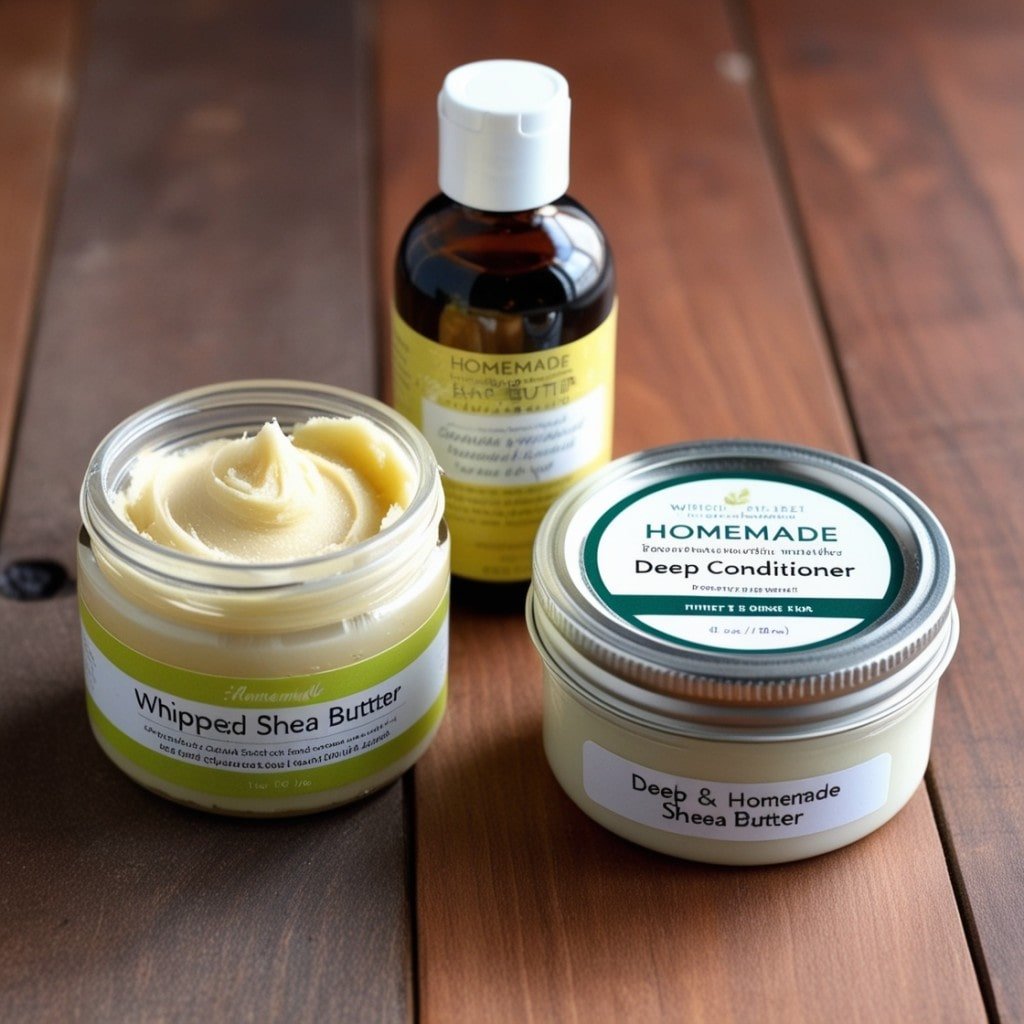
Hair butter is essential for sealing in moisture in 4C textures. You can create your own by mixing shea butter with oils like coconut or olive oil. Whip the mixture until it’s light and fluffy, then apply it to your hair to keep it hydrated and soft.
Inspiration from 4C Hair Icons
Famous Figures with 4C Hair

Many famous figures have embraced their 4C hair, from Lupita Nyong’o to Viola Davis. These women have shown that 4C textures is not only beautiful but also versatile and powerful.
Social Media Influencers Celebrating 4C Hair
Social media is full of influencers who are proudly showcasing their 4C textures. Following these influencers can provide inspiration and tips for styling and caring for your own 4C textures.
Conclusion
4C hair is a unique and beautiful hair type that deserves to be celebrated and cared for properly. By understanding the characteristics of 4C curls, embracing its natural beauty, and following a proper care routine, you can enjoy healthy, vibrant hair that reflects your identity and culture. Whether you’re just starting your natural hair journey or looking for new ways to care for your hair, this guide offers the insights and tips you need to embrace your 4C curls with confidence.
FAQs
How often should I wash my 4C hair?
It’s recommended to wash 4C textures every 1-2 weeks to avoid stripping it of its natural oils, which can lead to dryness.
What’s the best way to detangle 4C hair?
Detangle your 4C hair when it’s damp, using a wide-tooth comb or your fingers, and always start from the ends, working your way up to the roots.
Can 4C hair grow long?
Yes, 4C textures can grow long! It requires consistent care, including regular moisturizing, protective styling, and gentle handling to minimize breakage.
What ingredients should I avoid in hair products?
Avoid ingredients like sulfates, alcohols, and silicones, as these can dry out your hair and cause buildup, leading to damage.
How do I prevent my 4C hair from shrinking?
While you can’t completely prevent shrinkage, using stretching techniques like twist-outs or braids can help to minimize it and show off more of your hair’s length.
